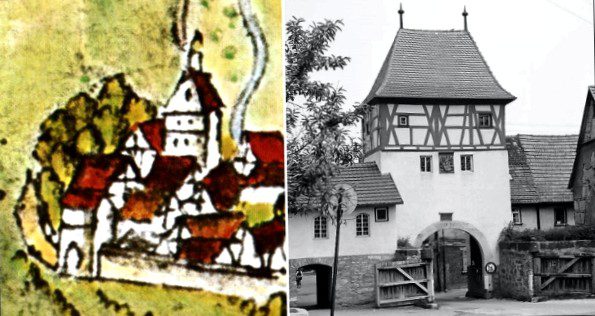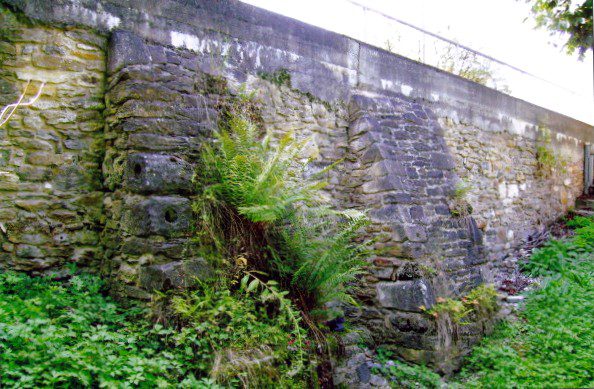
In 1803, the Kirchheimer Tor is sold to Johannes Heim, a carpenter, who wants to set up a dwelling above it. In the purchase book the purchase sum is noted as paid: "100 Gulden Baar Geldt". When the carpenter dies in 1815, it turns out during the recording of the estate that he never paid the purchase price.
The widow inherits Heim's debts, but can't pay them. On their newly built house in the ditch will be on 7. In October 1816, a mortgage of 400 guilders was entered in the book of pledges. The entry begins with the words: "Since the tower has now been demolished and she has built a new house in its place, but she has paid the above 100 fl. currently can not pay …"

The Kirchheimer gate was therefore already demolished around 1815/16, as can be seen from the Unterpfandsbuch in the city archives of Owen. The comparison of the post-colored picture in Kieser's forest map of 1863 and the picture of the old town gate of Lauda from 1960 gives an idea of how it might have looked like [Landesarchiv Baden-Wuerttemberg, Staatsarchiv Freiburg W 134 Nr. 061404a, excerpt] a rough idea.

In its original form, the town moat was 5 m deep, 25 m wide at the top, and still 9 m wide at the bottom, as noted by local historian Rudolf Locher. To the west of the moat bridge, the moat shows itself to be expansive; in contrast, the moat bridge itself is barely recognizable as a bridge when viewed from the east. It appears as a gray wall, divided by two massive pillars.

In the mayor's accounts, repairs are always accounted for the moat bridge, so z. B. 1693/94, when it had collapsed to a large extent and the vaults were rebuilt "de novo" and with a "bockhgeställ" [= vaulting doctrine]. The last collapse in its long history happened in 1945, when it caved in under an American Sherman tank, resulting in its current appearance.

During the reconstruction of the moat bridge, the war debris was piled up to form an embankment on the west side; the vaults thus closed from the west side were backfilled and bricked up on the east side. The town-side yoke has been supported with an additional pillar made of spolia, which has been bricked up more poorly than it should be; a light niche, probably from the cellar entrance of a destroyed house, is filler material. Only with a trained eye can you tell from the trench that the trench bridge once had two yokes, which goes without saying given the trench's 25-meter width.